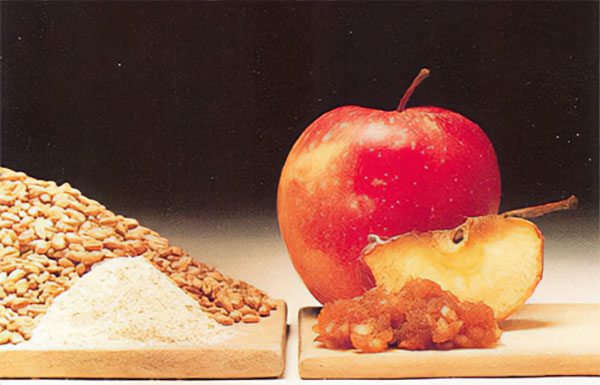hawos Grain Mills
When people choose to switch to a healthier whole food diet, the decision to grind their own flour is often one of the first steps they take.
Whole grain flour cannot be stored as nutrients and aroma are rapidly lost.The valuable nutrients of the whole grain and the wealth of vitamins in the germ are all only present in freshly ground flour, making a grain mill and/or a flaker an indispensable addition to the kitchen.
With a mill you can produce your own whole grain flour whenever you need it. Wonderful flavour and all the benefits that freshly milled flour offers in terms of health and physical well-being are reason enough to invest in a quality mill.
Wholemeal flour must be fresh!
Wholemeal flour does not keep for long and quickly goes rancid. Wholemeal flour should therefore not be stored. If possible, you should always buy the grain as a whole grain, grind it fresh as needed and consume it soon. Storage causes the flour to lose important ingredients.
You can tell how old the crushed apple is, but the flour…?
Grinding, packaging, wholesaler, retailer and only then to you.
And how long has it been on the shelves?
The freshness and many vital substances are lost!
Everyone knows this about the chopped apple and eats it fresh.
fresh.

Why grind grain fresh?
Extract flour – wholemeal flour
The main difference between “white” extracted flour and wholemeal flour is that in extracted flour the outer layers and the germ of the grain are removed. Therefore, the flour is particularly light and fine, but it loses almost all the vital substances and dietary fibres of the grain. Wholemeal flour – in contrast to wholemeal flour – does not have a long shelf life.
Wholemeal flour is made from the whole grain.
Wholemeal flour is therefore the most valuable flour in terms of health. Breads made from wholemeal flour are fuller, darker and weightier.
Flour types – type designations
Grain can be milled to different degrees of fineness
The type designations commonly used in the trade (from 405 to 1800) indicate the mineral content in the flour. The higher this value, the higher the proportion of minerals in the flour. Flours with low values therefore have a lower nutritional value.
There is no such type designation for wholemeal flours, as the whole grain is milled and thus the full mineral content is present. Only the different degree of fineness is indicated. For example, coarse meal means that the flour is only coarsely milled.

 Deutsch
Deutsch Dansk
Dansk